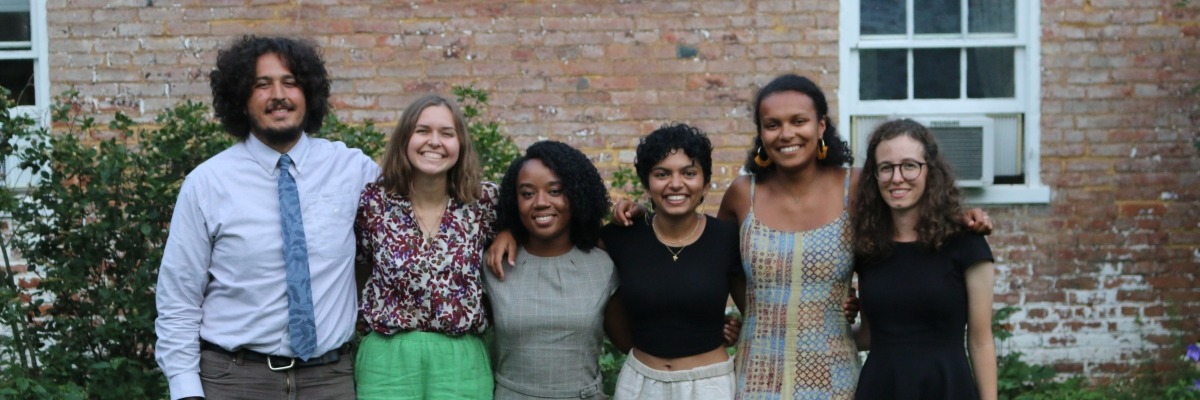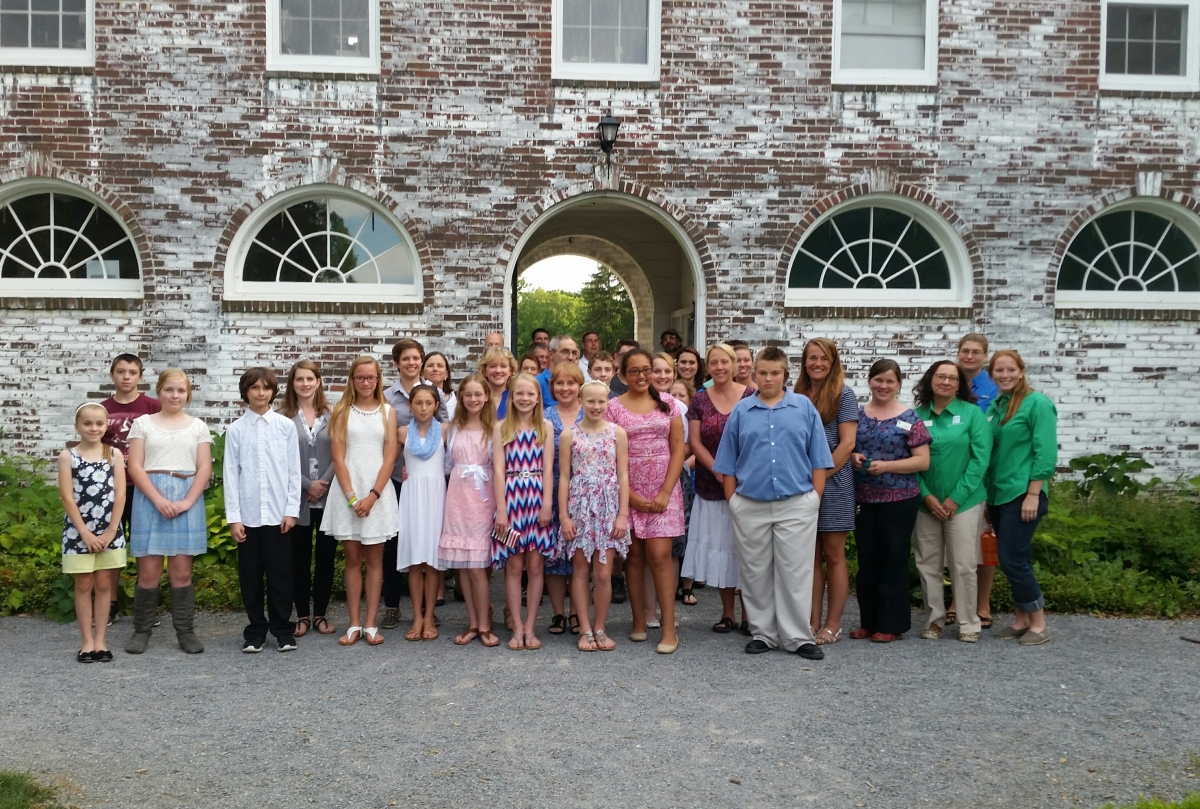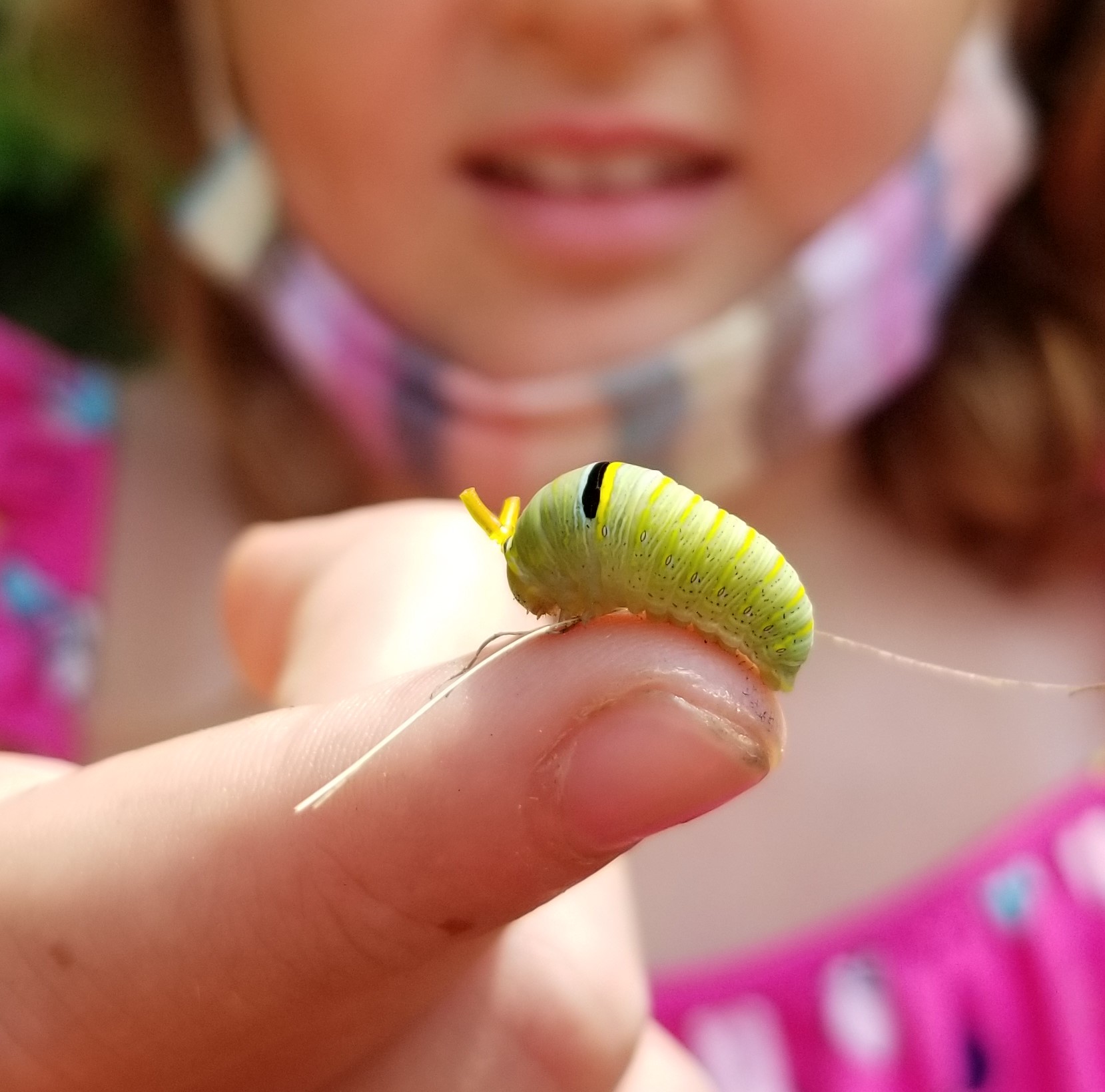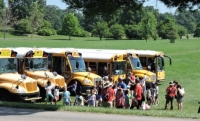
nice people
this is our reu class from 2021. Can we call them the class of 2020, like the 2020 Tokyo Olympics?

A Unique – but Productive – Summer of Research at Blandy
“Almost 250 undergraduates have moved through Blandy programs during my time here, and most of them find the experience life changing.”
By David Carr, Director of Blandy Experimental Farm
The summer research season has wrapped up at Blandy, and all went well. We began planning for the summer back in January, and we were forced to assume the state of the pandemic would not be any better when our students arrived in May. In the end, though, it turned into a pretty normal summer. One of the programmatic changes we made in response to the pandemic was to host all our Wednesday night seminars via Zoom. Although I missed the in-person experience, this approach did have one advantage: We were able to invite speakers from anywhere, rather than relying on a local pool of speakers, as we do most years.
We used this unique opportunity to catch up with some scientists who passed through Blandy while they were undergraduates. One of the primary goals of our National Science Foundation-funded Research Experience for Undergraduates (REU) program is to train the next generation of scientists, so it was exciting to see many of our alumni advancing in their careers.
Our first speaker of the summer was Dr. Helen Curry, who was an REU student at Blandy in 2002 when she was an undergraduate at Harvard. Helen worked with then Blandy Director Michael Bowers doing butterfly surveys in Clarke County. Since leaving Blandy and completing her degree at Harvard, Helen went on to do her Ph.D. work at Yale on the history of radiation in plant breeding during the Cold War. This topic brought her back to Blandy as a grad student to study the work of Dr. Ralph Singleton, Blandy’s former Director who experimented with irradiated corn from 1955 to 1965.
Helen is now a Senior Lecturer at the University of Cambridge, where she is currently researching the history and philosophy of seed banking. By the way, I should mention that Helen’s 2002 REU classmate at Blandy was Daniel Hanley from Cornell University. Daniel completed his Ph.D. at the University of Windsor, where he studied bird vision and its role in the evolution of egg coloration. Dr. Hanley has come full circle now. He is an Assistant Professor at nearby George Mason University, and this summer he and a Blandy REU student evaluated the ability of birds to recognize eggs from brood parasites (e.g., the Brown-headed Cowbird) based on the similarity in color to their own eggs.
Carla Vanderbilt was an REU student at Blandy back in 2009 when she worked with me studying the relationship between age and song complexity in Gray Catbirds. Carla’s interest in birds carried on into graduate school, earning her Ph.D. at Florida State University studying the courtship dances of the incredible Lance-tailed Manakin in Panama. Dr. Vanderbilt is now an Assistant Professor of biology at the University of Pikeville in Kentucky where she is teaching a new generation of students (many first-generation college students) the skills needed for biological research.
Roberto Carrera-Martinez worked with my graduate student Gerry Woodworth on the distribution of earthworms at Blandy during his time as an REU student in 2013. He came to us from the University of Puerto Rico at Mayaguez. Roberto’s fascination with earthworms has stayed with him through graduate school, and in his seminar this summer, he shared the discoveries he made (including a new species) as a Masters student at the University of Georgia. He is continuing his work on earthworms as a Ph.D. student at the University of Wisconsin. Dr. Woodworth, by the way, is now an Assistant Professor of biology at Mid-Atlantic Christian University.
The REU program has not been the only undergraduate training program at Blandy. Dr. Mary McKenna often brings undergraduates to Blandy from her home institution at Howard University, especially as part of Howard’s Environmental Biology Scholars program. Many of these students have now entered graduate school or have moved on to postdoctoral studies, and we were able to catch up with three of them in seminars this summer. Alexandria Igwe studied plants that grow on serpentine soils (naturally rich in toxic heavy metals) with Dr. McKenna in 2011. At the University of California at Davis, she continued studying how plants cope with serpentine soils in earning her Ph.D. in 2020. She is now a postdoctoral researcher at the University of Miami. As a Ph.D. student at the University of Michigan, Nia Johnson (Environmental Scholar 2012) is studying the effects of pesticide drift from crops to natural plants and the effects of these pesticides on the interactions between non-crops and their herbivores. As a Ph.D. student at the UC Davis, Erin Manaigo (Environmental Scholar 2013) is studying soil mineral supplements and their potential value for increasing carbon sequestration in the soil on agricultural land. This work could have important implications for the reduction of atmospheric carbon dioxide and slowing global temperature rise.
No experience in my professional career has given me more pleasure than getting to watch a new crop of undergraduates each year take charge of a research project for the first time in their lives. Almost 250 undergraduates have moved through Blandy programs during my time here, and most of them find the experience life changing. While not all go on to careers in sciences, the experience during their summer at Blandy has been formative to the vast majority. Their talents and the passion I get to see each summer is one of the things that makes me hopeful for the future.



 kasdlkjfsalj
kasdlkjfsalj